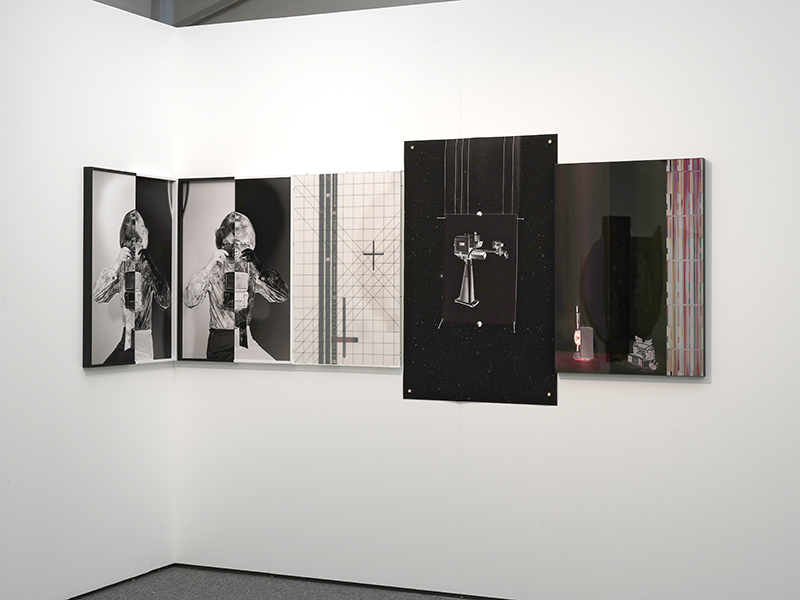In these works, whose title emphasizes the self-reflexive nature, I wanted to highlight the beauty and strangeness of technical objects, but also the sensuality and fantasy that can be associated with them.
Inspired by optical diagrams representing the deviation of light rays in the camera and the phenomena of refraction, reflection and projection, these pieces combine different types of image. Each piece takes as its starting point the negative of a promotional photograph from the Pentacon collection, and ends with a view of a wafer*. Each work also incorporates didactic drawings, bizarre views of negative material and collages that appropriate works by Laszlo Moholy-Nagy, an artist who played a fundamental role in the theorization of photography.
In 1923, he had the brilliant idea of making a piece remotely by phoning a sign maker with the spatial coordinates of the elements making up a drawing previously produced on graph paper. Thus, he anticipated the conceptual art of the 1960s, as well as the principle that an image can be converted into a set of digital data. I have transposed this telephone painting into a collage for FEEDBACK LOOP/Projection, a work that evokes, literally and figuratively, the idea of projection at play in photography and film.The first photograph of the set, shows a female model using an autofocus camera that has never been marketed because it didn't work, while the highly magnified view of the wafer surface that closes the sequence is reminiscent of the Frozen Film Frames series by experimental filmmaker Paul Sharits.
The other two assemblages - FEEDBACK LOOP/Refraction and FEEDBACK LOOP/Reflection - are kind of allegorical narratives of the reflex viewfinder - an invention that originated in Dresden. They are mental representations that evoke the mechanisms at work at the moment of shooting, both inside the camera and in the photographer's imagination, embodied here by a female model. Within this reflexive loop, she is both subject and object, a positive and a negative, a reflected and a refracted image, as viewed through a stigmometer - which is underlined by the physical shift of the print on two different levels; she poses with her left eye either open or closed like a shutter, reminding us of the paradox that images recorded by a reflex camera cannot be seen by the operator at the moment of shooting. The enlarged versos of the wafers that close the set are reminiscent of strange planets, revealing traces of fingerprints, if not smudges, reminiscent of those elusive floating bodies that drift across the surface of our retinas when we turn our eyes towards light.
* wafers are silicon disks used in the manufacture of integrated circuits used throughout the electronics and digital sensor industries


